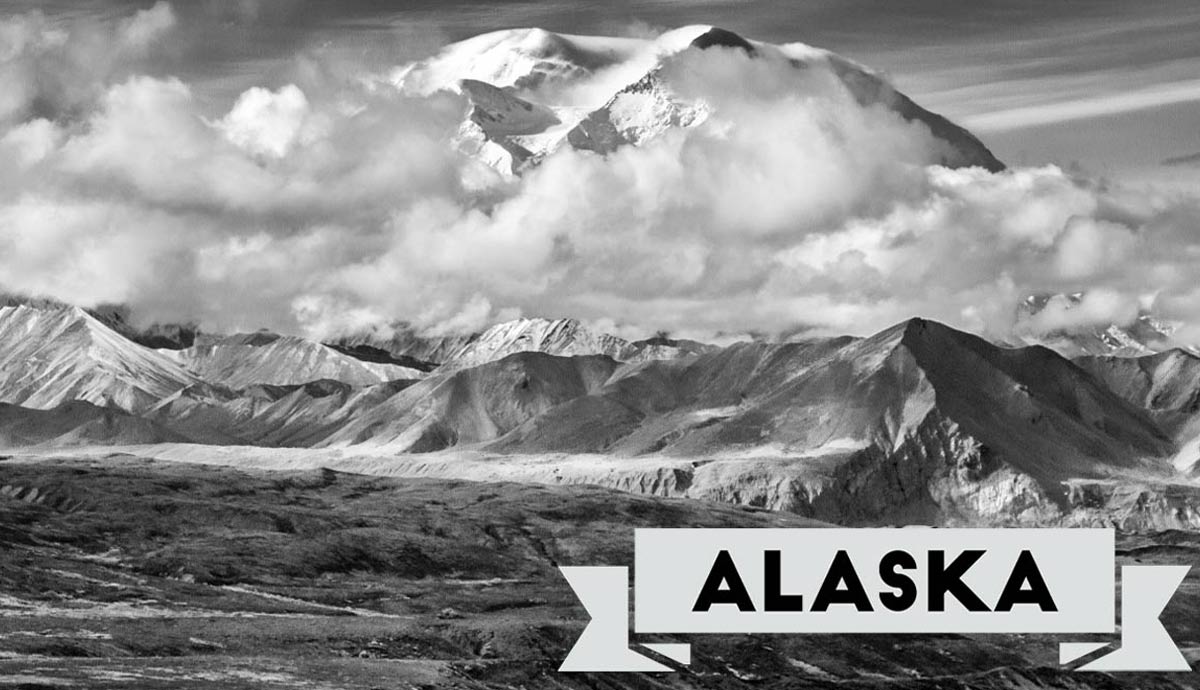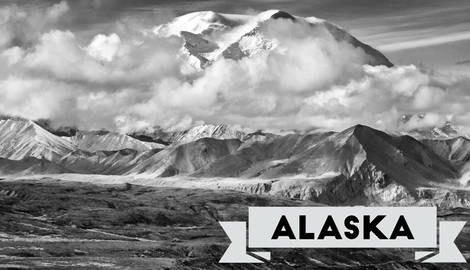
Some of the highest and most remote peaks in the country can be found in the vast parks and mountain ranges of Alaska. Ranging from the Interior to the rainforests and glacial plains of Southeast, these peaks are iconic representations of the scale and grandeur of their great state.
1. Denali

Standing at an impressive 20,310 feet, Denali in the Alaska Range is both Alaska’s and North America’s highest peak. Formerly named Mt. McKinley by a gold miner, the peak was returned to its original Athabascan name Denali in 2015. Located in the vast Denali National Park and Preserve in Interior Alaska, Denali attracts nearly 1000 climbers each year out of the park’s 400,000 visitors. The first official ascent of the peak was in 1913 via the South Summit by climbers Harry Karstens, Walter Harper, Hudson Stuck, and Robert Tatum. There have been 129 climbing deaths on Denali since 1932, however its beauty and magnificence continue to attract seasoned and amateur climbers alike.
2. Mount Saint Elias

The second highest peak in both Canada and the United States, Mount Saint Elias sits in the Saint Elias Mountain Range on the border between Alaska and the Yukon. Part of the Wrangell St. Elias National Park and Preserve, this impressive 18,009 foot peak bears the Tlingit name Yas’éit’aa Shaa meaning “mountain behind Icy Bay”. Known for its prominence above the bay, it has a vertical relief of ten miles over its roughly 18,000 feet of height. Mount Saint Elias was first climbed by an Italian expedition in 1897 but not again until 1946 by the Harvard Mountaineering Club. Due to frequent bad weather and no easily accessible route, the peak is rarely summitted.
3. Mount Foraker

Also located in Denali National Park and Preserve just 14 miles southwest of Denali, Mount Foraker is the 2nd highest in the Alaska Range and 6th highest peak in North America. At 17,400 feet, it was named in 1899 after Joseph B. Foraker, then an Ohio State Senator. The Athabascan names for Foraker are Sultana meaning “the woman” or Menlale, meaning “Denali’s wife”. Mount Foraker was first climbed in 1934 and sits above the vast 200-square-mile Kahiltna Glacier.
4. Mount Bona

At 16,550 feet tall, Mount Bona in the Saint Elias Mountains is the highest volcano in the United States and the 4th highest in North America. It is a stratovolcano, built up of layers of lava and ash, now covered in ice fields and glaciers. It is the main source for the nearby 40-mile long Klutlan Glacier. The mountain was named in 1897 by an Italian mountaineer and explorer, Prince Luigi Amadeo who named the peak after his yacht. The easiest access to Bona is by plane from either McCarthy or Chitina.
5. Mount Blackburn

Mount Blackburn is the highest peak in the Wrangell Mountains at 16,390 feet tall. The second highest volcano in the United States, it is a shield volcano, known for its lower and broader profile. Blackburn is the principal source of the Kennicott Glacier which flows Southeast toward the town of McCarthy. The first ascent of the peak was recorded in 1958 via the North Ridge, accessed from the Nabesna Glacier. The climbing route begins at an airstrip some 7200 feet up but due to storms and seasonal inaccessibility, less than 50 people have attempted it in the last three decades.
6. Mount Sanford

Also a shield volcano and the third highest in the United States, Mount Sanford sits in the Wrangell Volcanic Field at a height of 16,237 feet. Located near the Copper River, known for its salmon runs, Sanford is the 6th highest mountain in the U.S. The south face rises 8000 feet in only one mile, making it one of the steepest gradients on the continent. First climbed in 1938 by Terris Moore and Bradford Washburn, the north route remains the most popular way to climb Sanford to this day due to its easy access and lack of technical terrain. Japanese climber Naomi Uemura completed the first solo ascent in 1968.










